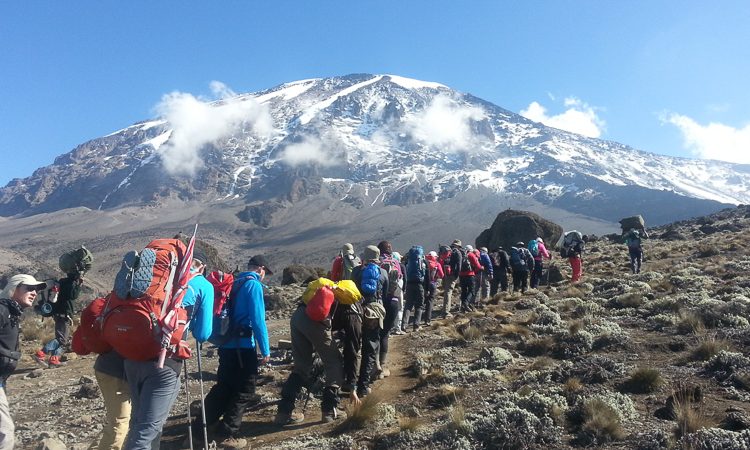The Best Time to Climb Kilimanjaro: A Comprehensive Guide

Mount Kilimanjaro, Africa’s highest peak, stands as a monumental challenge and a breathtaking adventure for climbers worldwide. At 5,895 meters (19,341 feet) above sea level, it presents a unique set of challenges and rewards, making the timing of your climb crucial for a successful and enjoyable ascent. Understanding the best time to climb Kilimanjaro involves considering weather patterns, altitude conditions, and personal preferences. This guide explores the optimal The best time to climb Kilimanjaro, helping you plan your ascent to ensure the best possible experience.
Understanding Kilimanjaro’s Climate
Kilimanjaro’s climate is influenced by its elevation and geographical location. The mountain experiences two main seasons: the rainy season and the dry season. Each season impacts climbing conditions differently, and understanding these conditions is key to choosing the best time for your climb.
Rainy Season
- Long Rains: Typically occur from March to May. This period is characterized by heavy rains, which can lead to muddy trails, slippery conditions, and increased cloud cover. The long rains can make climbing more challenging and less pleasant.
- Short Rains: Usually occur from November to December. While shorter than the long rains, this period still brings intermittent showers and overcast skies. The short rains can also affect trail conditions and visibility.
Dry Season
- First Dry Season: Runs from June to October. This is considered the peak climbing season, with relatively stable weather, lower humidity, and clearer skies. Conditions are generally favorable for climbing, with dry trails and good visibility.
- Second Dry Season: Occurs from January to February. This period also offers good climbing conditions, with dry weather and stable temperatures. However, it can be slightly hotter than the first dry season.
The Best Time to Climb Kilimanjaro
June to October: Peak Climbing Season
The period from June to October is widely regarded as the best time to climb Kilimanjaro. Here’s why:
- Weather Conditions: This dry season offers relatively stable weather with minimal rainfall, making the trails less muddy and more manageable. Clear skies and lower humidity provide better visibility and a more comfortable climbing experience.
- Temperature: Temperatures are cooler and more stable, reducing the risk of extreme weather conditions. The cooler temperatures are advantageous for climbing, as they help maintain energy levels and comfort.
- Crowds: While this is the peak climbing season, the high number of climbers can be a double-edged sword. The increased traffic means more people on the trails, which can lead to busier campsites and higher costs. However, it also means better support services and well-maintained trails.
January to February: Alternative Climbing Window
The months of January and February are also favorable for climbing Kilimanjaro, offering a secondary dry season:
- Weather Conditions: Similar to the June to October period, January and February feature dry weather with clear skies and stable temperatures. The trails are generally dry, and visibility is good.
- Temperature: The temperatures can be warmer during these months, especially at lower elevations. While this can be more comfortable during the day, it may result in cooler temperatures at higher altitudes, requiring adequate preparation.
- Crowds: The early part of the year typically experiences fewer climbers compared to the peak months. This can result in a more serene and less crowded experience, though it may also mean fewer available services and guides.
Considerations for Timing Your Climb
Personal Preferences and Goals
- Comfort and Convenience: If you prefer more predictable weather and the comfort of well-established services, the peak climbing season (June to October) is ideal. However, if you enjoy quieter trails and don’t mind slightly warmer temperatures, January and February are also good options.
- Budget: The peak season often comes with higher costs due to increased demand for permits, guides, and accommodation. If you’re looking for a more budget-friendly option, consider climbing during the less crowded months of January or the shoulder seasons.
Acclimatization and Physical Preparation
Regardless of the season, adequate acclimatization and physical preparation are crucial. Kilimanjaro’s high altitude poses a significant challenge, and spending sufficient time acclimatizing is essential to avoid altitude sickness. The longer climbing routes, such as Lemosho or Machame, provide more time for acclimatization, increasing your chances of a successful summit.
Trail Conditions
- Mud and Slippery Trails: During the rainy season, trails can become muddy and slippery, making the climb more challenging. If you prefer better trail conditions, avoid the rainy months and opt for the dry seasons.
- Visibility: Clear skies during the dry seasons provide better visibility and enhance the overall climbing experience. This is especially important for enjoying the stunning landscapes and panoramic views from Kilimanjaro.
Wildlife and Scenic Views
- Wildlife: The rainy season can bring lush vegetation and increased wildlife activity on the lower slopes. If wildlife viewing is a priority, the rainy season may offer unique opportunities.
- Scenic Views: The dry seasons offer the best panoramic views of Kilimanjaro and the surrounding landscapes. Clear skies and stable weather conditions enhance the visibility of the mountain’s various landscapes, including glaciers, volcanic craters, and alpine deserts.
Preparing for Your Climb
Plan Ahead
- Permits and Bookings: Ensure that you secure the necessary permits and book your climbing package well in advance, especially if you’re climbing during the peak season. This will help avoid last-minute issues and ensure availability.
- Gear and Equipment: Pack appropriate gear based on the season. For dry seasons, ensure you have suitable clothing for varying temperatures, including layers for warmth and sun protection. For the rainy season, waterproof gear and sturdy hiking boots are essential.
Physical Training and Acclimatization
- Training: Prepare for the climb with a rigorous fitness regimen that includes cardiovascular training, strength building, and hiking practice. Simulate climbing conditions by hiking with a loaded backpack and increasing your endurance.
- Acclimatization: Choose a longer route that allows for gradual acclimatization. Adequate acclimatization is crucial for reducing the risk of altitude sickness and increasing your chances of reaching the summit.
Health and Safety
- Vaccinations and Health Check: Consult a travel health clinic for recommended vaccinations and health advice. Ensure you are in good health and prepared for high-altitude conditions.
- Safety Measures: Follow safety guidelines during the climb, including staying hydrated, eating properly, and monitoring for symptoms of altitude sickness.
Conclusion
The best time to climb Kilimanjaro largely depends on your preferences, goals, and tolerance for weather conditions. The peak climbing season from June to October offers stable weather, cooler temperatures, and well-established services, making it the most popular time for climbers. Alternatively, January and February provide a quieter experience with similar favorable conditions.
Regardless of when you choose to climb, proper preparation, acclimatization, and safety measures are essential for a successful ascent. By selecting the right time and preparing thoroughly, you can ensure a memorable and rewarding journey to the summit of Mount Kilimanjaro.








